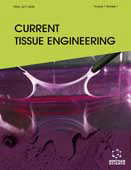Abstract
Background: Notochordal cells (NCs) from the central nucleus pulposus (NP) region of the intervertebral discs (IVD) in the spine have an important function in IVD development, as well as in maintaining disc homeostasis. Indeed, the disappearance of NCs, which occurs early in life in humans, is associated with the earliest stages of disc degeneration, suggesting a link between the two events. Given the vital role NCs play in the IVD, a more complete knowledge of NC behavior and function, as well as how NCs may be employed in the development of new treatment methods for IVD degeneration, is necessary. The purpose of this paper is to provide an overview of NCs, including their phenotypic expression, their loss and consequences thereof in the disc, and possible strategies to use NCs in disc regeneration and repair.
Methods: Background information regarding the phenotypic expression and role of NCs in the IVD is reviewed. An overview of the current knowledge on possible factors contributing to NC cell loss is presented, along with resulting consequences of the shift in cell population in the NP. Finally, the current research on methods to employ NCs in regenerative treatment strategies is provided.
Results: Notochordal NP cells have a particular phenotype that is unique from aged or degenerated NP cells which is important for IVD development and maintenance. Thus, the disappearance of NCs has detrimental effects on the health and function of the IVD. Numerous factors may contribute to change in NC activity and/or viability, including microenvironmental conditions such as hypoxia, hyperosmolarity, and mechanical loading. Research is ongoing in determining how the positive effects of NCs can be harnessed into new strategies for IVD restoration, including use of NCs in cell transplantation as a cell source, via co-culture of NCs with other cells, or through the use of NC conditioned media.
Conclusion: Given the important role NCs play in the health and functionality of the IVD, as well as the positive effects of NCs on other cells, notochordal cells show great potential in the development of new cellular based strategies to prevent and/or treat disc degeneration.
Keywords: Cell-based therapy, co-culture, disc degeneration, notochord phenotype, notochordal cell conditioned media, nutrition.
 15
15

